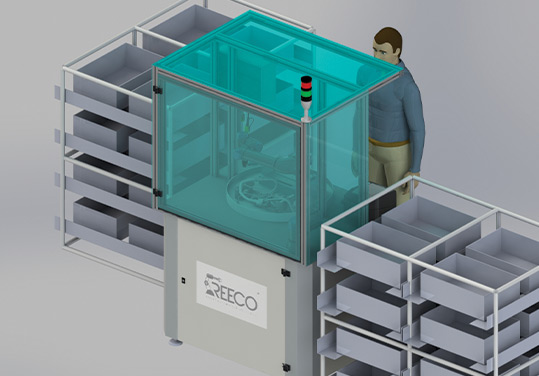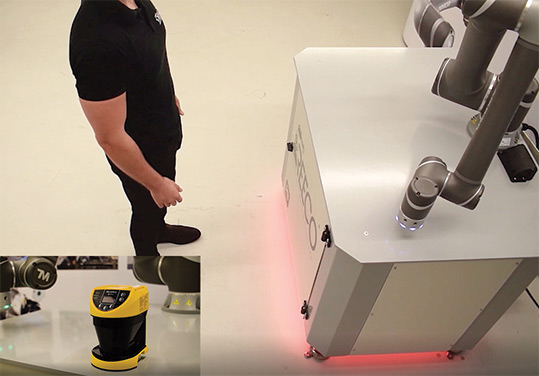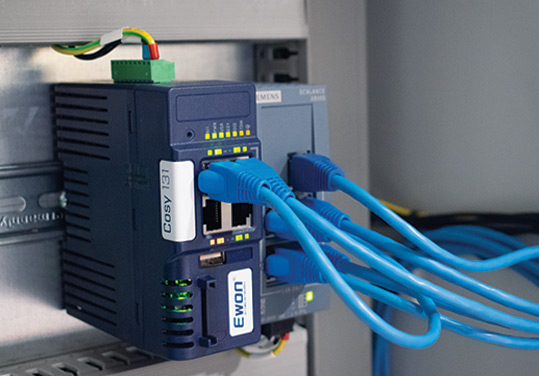ROBOTIC RIVETING SYSTEM
Riveting is a very repetitive and highly accurate process, an area where a robotic riveting system would thrive. Manual riveting processes can cause issues of inconsistency, poor cycle times and RSI due to it being a very unergonomic task. As operators would typically be using hand-held rivet guns, there are variables at play which greatly affect the output. Staff changeovers can result in inconsistencies in productivity, and the use of a hand-held rivet gun over time is likely to cause dips in productivity due to the high levels of accuracy and repeatability required to line up each rivet.
Innovations in automation and the introduction of new technology such as collaborative robots has allowed the benefits of robotic automation to be applied to even more applications such a riveting system, opening doors to automation for companies of all sizes.
Robot Automated Systems
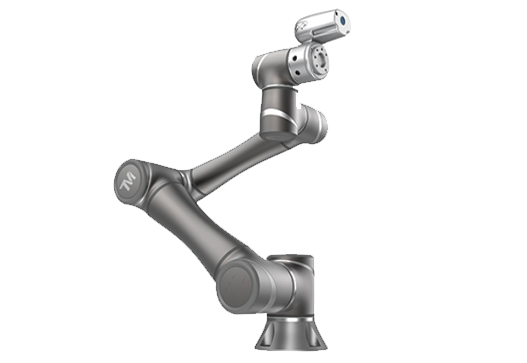
If precision and consistency are keys to your production’s success, then a robot may be the answer. A robotic riveting system will consistently and repeatedly follow exact processes and pre-defined workflows with miniscule deviation. It requires superhuman abilities to repeat the same movement over and over again for many hours with exactly the same precision, however this is the area where robots excel.
As robotic technology has advanced and become more widely used, robots have become less expensive than they previously were, opening automation doors to more opportunities. Robot automation has also become more flexible, with high mix productions being easily achievable with robotics, supporting the ever-changing consumer demand.
Riveting Process
Rivets are mechanical fasteners that are inserted through holes to join two of more parts together. Rivets form permanent heads at each end, preventing removal. The function of rivets is similar to that of nuts and bolt, however while nuts are capable of being unscrewed for disassembly and reassembly, rivets need to be broken for disassembly. Rivets are designed to be strong and permanent, filling a similar role to structural adhesives and welding. The main advantage to rivets is their ability to resist vibrations and secure joins with short clamp length.
Particularly where hand-held rivet guns are being used, the rivet process can be alleviated through the use of robots by supplementing the human workforce as an automated rivet fastener. Collaborative methods of integration can also be affective, with Cobots enabling operators and robots to work together on the same task.

Used as a more permanent fixing solution, rivets are widely adopted across many industries due to their reliability. As rivets don’t use threads, vibrations are unable to disturb rivets like they can bolts, therefore rivet fasteners are a good option for manufacturers looking for a permanent fixing solution, reducing the risk of any future structural issues.

Blind rivets and blind rivet nuts are commonly used in the automotive industry to assemble the structural parts of a vehicle such as the chassis, door hinges, steering columns and seat structure among others, making them a popular fastener choice for automotive engineers.

For the aviation industry, blind rivets are useful for installation of cabin components and non-load-bearing parts. Pop fasteners are also used due to being easy to install and able to handle drastic temperature changes without weakening.

Though permanent, the lack of a thread means that rivets can offer some rotation which gives them use for things such as collapsible wooden structures. Their somewhat aesthetic look also means that rivets are frequently used in the assembly of furniture.
Cobot Automation Solutions
The introduction of Cobots gives way to new assembly automation opportunities, offering superior production flexibility. When weighing up automation options, Cobots have payload and reach capabilities which are more comparable to that of a human operator, capable of manipulating materials in tight spaces. Offering the same industrial robot accuracy and repeatability that we are all familiar with, Cobots apply this rationale to smaller tasks which were previously not automated, offering a safe alternative to close quarters automation.
Increasingly innovative technology offerings such as force feedback and other additional equipment are continuously offering more and more opportunities for automation. Many Cobots are now fitted with force sensing technologies out of the box, these OEM features provide the robots with force sensing capabilities, adding an additional layer of safety and functionality to the equipment.


Cobots are well suited to the automation of riveting processes in areas such as automotive, where rivet repetition is high and accuracy and throughput are important. Cobots are collaborative by nature, their smooth design, lack of pinch points, integrated force feedback and speed mean they are able to work with humans, next to humans and in a shared space with humans. This level of deployment flexibility allows them to be deployed onto tasks in many ways, such as collaboration with a riveting system.
Utilising a HRC (human-robot collaboration) approach, the KUKA LBR iiwa can be deployed to work directly with operators, responding to touch and perfectly supplementing riveting processes by leaving the operator in full control of every rivet.
For other deployment methods, Cobots such as the Omron TM can be used to automate riveting systems.
Self Dispensing
A significant benefit of deploying robotic methods of automation is that the tooling options aren’t limited. Whether it’s a bespoke tool to best suit the application, or an industry standard tool that is needed in order to meet requirements.
By utilising their existing GESIPA rivet guns, our Cobot solution for BMW allowed for the automatic dispensing of rivet stems.
Fully HRC Collaborative System
Using the KUKA, advanced safety features are available which enable it to be a fully HRC system.
In addition to the many sensors its equipped with, the LBR iiwa is also aware of its surroundings thanks to a pre-defined virtual ‘space’, allowing it to understand its location and the boundaries which have been set for it. Utilising this feature alongside vision systems can allow the Cobot to work directly with an operator, collaborating on a task for maximum production efficiency and compliance with safety guidelines within ISO/TS 15066:2016.
In instances where a rivet cant be fastened, the Cobot is able to utilise its tactile search function which sense tolerance build up, allowing it to understand that a rivet may not be in a 100% repeatable position. When these instances occur, the operator can use their discretion to influence the Cobot by pushing the arm way via impedance mode, or instructing it to try again, giving the operator full control over the process.

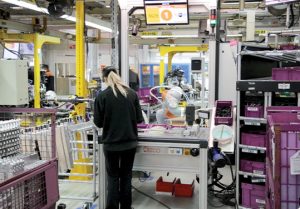

Reeco aim to provide the highest standard in service and support. From initial discussions to final installation, Reeco offer support at every stage of your projects journey, from proof of concept to sophisticated safety systems, remote access systems and bespoke service packages.


